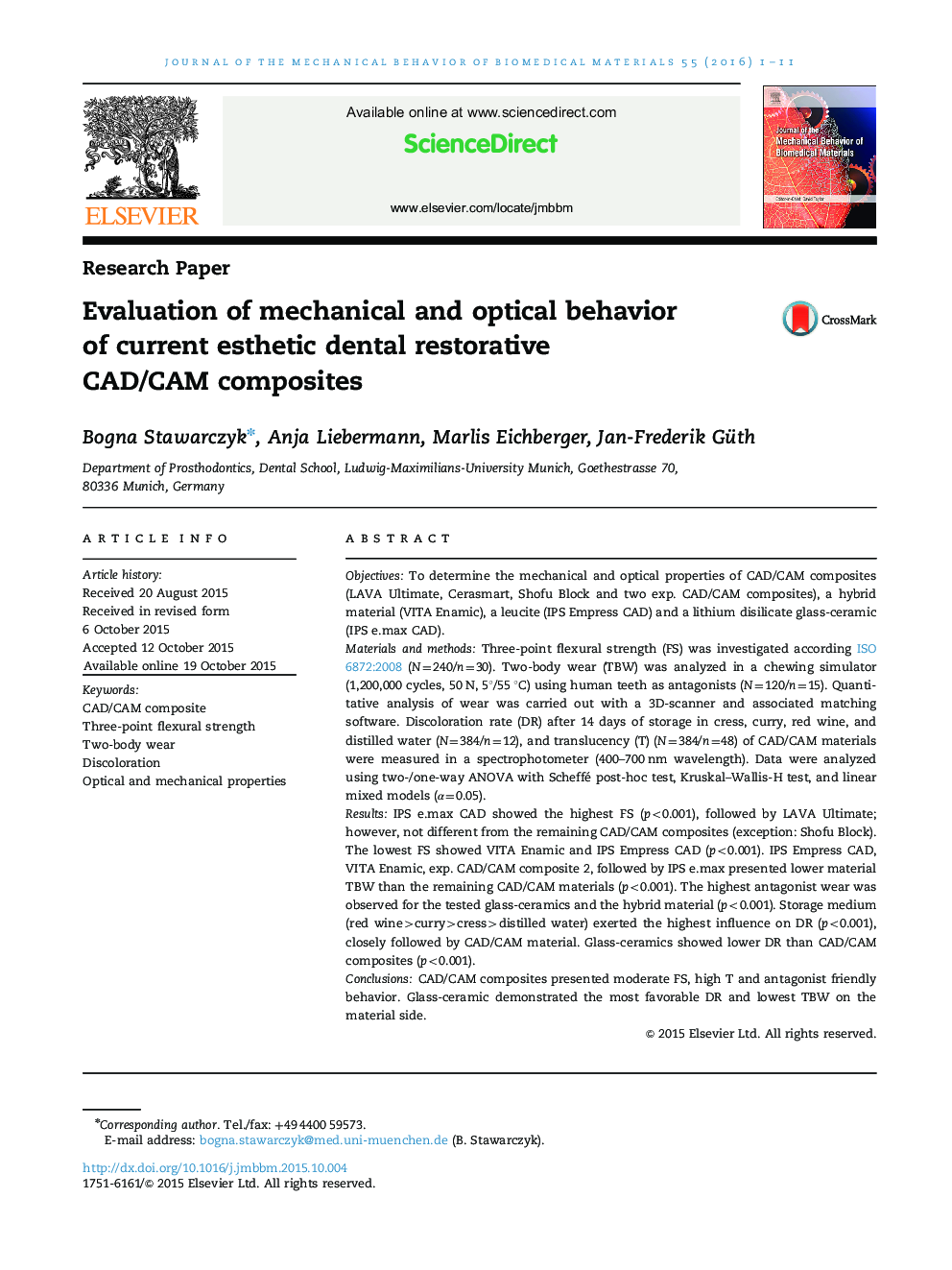| کد مقاله | کد نشریه | سال انتشار | مقاله انگلیسی | نسخه تمام متن |
|---|---|---|---|---|
| 810490 | 1469090 | 2016 | 11 صفحه PDF | دانلود رایگان |

ObjectivesTo determine the mechanical and optical properties of CAD/CAM composites (LAVA Ultimate, Cerasmart, Shofu Block and two exp. CAD/CAM composites), a hybrid material (VITA Enamic), a leucite (IPS Empress CAD) and a lithium disilicate glass-ceramic (IPS e.max CAD).Materials and methodsThree-point flexural strength (FS) was investigated according ISO 6872:2008 (N=240/n=30). Two-body wear (TBW) was analyzed in a chewing simulator (1,200,000 cycles, 50 N, 5°/55 °C) using human teeth as antagonists (N=120/n=15). Quantitative analysis of wear was carried out with a 3D-scanner and associated matching software. Discoloration rate (DR) after 14 days of storage in cress, curry, red wine, and distilled water (N=384/n=12), and translucency (T) (N=384/n=48) of CAD/CAM materials were measured in a spectrophotometer (400–700 nm wavelength). Data were analyzed using two-/one-way ANOVA with Scheffé post-hoc test, Kruskal–Wallis-H test, and linear mixed models (α=0.05).ResultsIPS e.max CAD showed the highest FS (p<0.001), followed by LAVA Ultimate; however, not different from the remaining CAD/CAM composites (exception: Shofu Block). The lowest FS showed VITA Enamic and IPS Empress CAD (p<0.001). IPS Empress CAD, VITA Enamic, exp. CAD/CAM composite 2, followed by IPS e.max presented lower material TBW than the remaining CAD/CAM materials (p<0.001). The highest antagonist wear was observed for the tested glass-ceramics and the hybrid material (p<0.001). Storage medium (red wine>curry>cress>distilled water) exerted the highest influence on DR (p<0.001), closely followed by CAD/CAM material. Glass-ceramics showed lower DR than CAD/CAM composites (p<0.001).ConclusionsCAD/CAM composites presented moderate FS, high T and antagonist friendly behavior. Glass-ceramic demonstrated the most favorable DR and lowest TBW on the material side.
Journal: Journal of the Mechanical Behavior of Biomedical Materials - Volume 55, March 2016, Pages 1–11